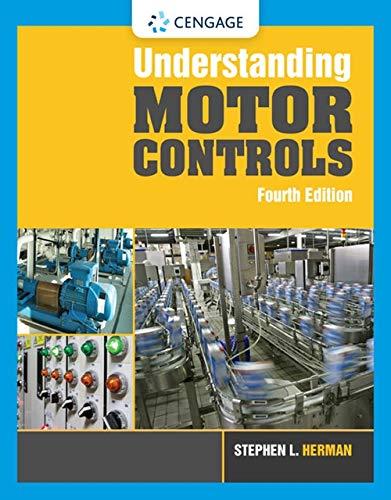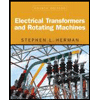
AUTOMOTIVE TECHNOLOGY (W/MINDTAP)
7th Edition
ISBN: 9780357096772
Author: ERJAVEC
Publisher: CENGAGE L
expand_more
expand_more
format_list_bulleted
Textbook Question
Chapter 20, Problem 2SA
What is a CHMSL?
Expert Solution & Answer
Want to see the full answer?
Check out a sample textbook solution
Students have asked these similar questions
(read image) (answer given)
(Read Image) (Answer: vC = 0.965 ft/sec right)
A gas mixture with a molar analysis of 40% CH4 (methane) and 60% air enters a control volume operating at steady state at location 1
with a mass flow rate of 5 kg/min, as shown in the figure below. Air enters as a separate stream at 2 and dilutes the mixture. A single
stream exits with a mole fraction of methane of 5%. Assume air has a molar analysis of 21% O2 and 79% N2.
(CH4, Air)
m₁ =
= 5 kg/min
Air
(21% O2, 79% N₂)
3
+
(5% CH4, 95% Air)
Chapter 20 Solutions
AUTOMOTIVE TECHNOLOGY (W/MINDTAP)
Ch. 20 - What lighting systems are controlled by the...Ch. 20 - What is a CHMSL?Ch. 20 - How many wires are normally connected to a double...Ch. 20 - What are the most probable causes for one low-beam...Ch. 20 - Why do some manufacturers protect the headlamp...Ch. 20 - What types of headlights do not have a filament?Ch. 20 - What is the primary tool used to diagnose an auto...Ch. 20 - True or False? HID lamps produce more heat and...Ch. 20 - True or False? The headlights on many adaptive...Ch. 20 - True or False? All turn signal flasher units...
Ch. 20 - Which of the following may cause the turn signal...Ch. 20 - Circuits that can energize the high beams even if...Ch. 20 - Which of the following would probably not cause...Ch. 20 - The stoplight switch is normally mounted on the...Ch. 20 - Which of the following is not a true statement...Ch. 20 - While troubleshooting a headlight problem:...Ch. 20 - Technician A says that the condition of the...Ch. 20 - Composite headlights are being discussed:...Ch. 20 - While troubleshooting a brake light problem;...Ch. 20 - Technician A says that a composite headlight...Ch. 20 - While diagnosing an HID lamp that does not turn...Ch. 20 - Technician A says that flickering vehicle lights...Ch. 20 - The turn signals operate in the left direction...Ch. 20 - The right back-up lamp is dim: Technician A says...Ch. 20 - When the headlights are switched from low beam to...
Knowledge Booster
Learn more about
Need a deep-dive on the concept behind this application? Look no further. Learn more about this topic, mechanical-engineering and related others by exploring similar questions and additional content below.Similar questions
- A. Calculate the cutting time if the length of cut is 24 in., the feed rate is 0.030 ipr, and the cutting speed is 80 fpm. The allowance is 0.5 in and the diameter is 8 in. B. Calculate the metal removal rate for machining at speed of 80 fpm, feed of 0.030 ipr, at a depth of 0.625 in. Use data from the previous problem.arrow_forwardConsider 0.65 kg of N2 at 300 K, 1 bar contained in a rigid tank connected by a valve to another rigid tank holding 0.3 kg of CO2 at 300 K, 1 bar. The valve is opened and gases are allowed to mix, achieving an equilibrium state at 290 K. Determine: (a) the volume of each tank, in m³. (b) the final pressure, in bar. (c) the magnitude of the heat transfer to or from the gases during the process, in kJ. (d) the entropy change of each gas and of the overall system, in kJ/K.arrow_forwardA gas mixture with a molar analysis of 40% CH4 (methane) and 60% air enters a control volume operating at steady state at location 1 with a mass flow rate of 5 kg/min, as shown in the figure below. Air enters as a separate stream at 2 and dilutes the mixture. A single stream exits with a mole fraction of methane of 5%. Assume air has a molar analysis of 21% O2 and 79% N2. (CH4, Air) m₁ = = 5 kg/min Air (21% O2, 79% N₂) 3 + (5% CH4, 95% Air)arrow_forward
- A gas mixture with a molar analysis of 40% CH4 (methane) and 60% air enters a control volume operating at steady state at location 1 with a mass flow rate of 5 kg/min, as shown in the figure below. Air enters as a separate stream at 2 and dilutes the mixture. A single stream exits with a mole fraction of methane of 5%. Assume air has a molar analysis of 21% O2 and 79% N2. (CH4, Air) m₁ = = 5 kg/min Air (21% O2, 79% N₂) 3 + (5% CH4, 95% Air)arrow_forwardArgon (Ar), at T₁ = 350 K, 1 bar with a mass flow rate of m₁ 3 kg/s enters the insulated mixing chamber shown in the figure below and mixes with carbon dioxide (CO2) entering as a separate stream at 575 K, 1 bar with a mass flow rate of 0.5 kg/s. The mixture exits at 1 bar. Assume ideal gas behavior with k = 1.67 for Ar and k = 1.25 for CO2. Argon (Ar) P₁ = 1 bar mT For steady-state operation, determine: (a) the molar analysis of the exiting mixture. (b) the temperature of the exiting mixture, in K. (c) the rate of entropy production, in kW/K. Insulation 3 + Mixture exiting P3 = 1 bar 2+ Carbon dioxide (CO2) T₂ = 575 K P2 = 1 bar m2 = 0.5 kg/sarrow_forwardConsider 0.65 kg of N2 at 300 K, 1 bar contained in a rigid tank connected by a valve to another rigid tank holding 0.3 kg of CO2 at 300 K, 1 bar. The valve is opened and gases are allowed to mix, achieving an equilibrium state at 290 K. Determine: (a) the volume of each tank, in m³. (b) the final pressure, in bar. (c) the magnitude of the heat transfer to or from the gases during the process, in kJ. (d) the entropy change of each gas and of the overall system, in kJ/K.arrow_forward
- 1. For the following two-DOF system, determine the first natural frequency using equation method: Raylieghs m2=2 kg k₂= 80 N/m m₁ =1 kg www k₁= 40 N/marrow_forward(◉ Home - my.uah.edu Homework#5 MasteringEngineering Mastering X + 8 https://session.engineering-mastering.pearson.com/myct/itemView?assignmentProblemID=18992148&offset=nextarrow_forwardCHAPTER 14: Kinetics of a Particle: Conservation of Energy Qu.4 The spring has a stiffness k = 200 N/m and an unstretched length of 0.5 m. If it is attached to the 3- kg smooth collar and the collar is released from rest at A, determine the speed of the collar when it reaches B. Neglect the size of the collar.please show all work step by steparrow_forwardQu. 2 The 100-kg crate is subjected to the action of two forces. If it is originally at rest, determine the distance it slides in order to attain a speed of 6 m/s. The coefficient of kinetic friction between the crate and the surface is uk = 0.2. i need to show all work step by step problemsarrow_forward(◉ Home - my.uah.edu Homework#5 MasteringEngineering Mastering X + 8 https://session.engineering-mastering.pearson.com/myct/itemView?offset=next&assignmentProblemID=18992146arrow_forward(read image)arrow_forwardarrow_back_iosSEE MORE QUESTIONSarrow_forward_iosRecommended textbooks for you
 Automotive Technology: A Systems Approach (MindTa...Mechanical EngineeringISBN:9781133612315Author:Jack Erjavec, Rob ThompsonPublisher:Cengage Learning
Automotive Technology: A Systems Approach (MindTa...Mechanical EngineeringISBN:9781133612315Author:Jack Erjavec, Rob ThompsonPublisher:Cengage Learning Welding: Principles and Applications (MindTap Cou...Mechanical EngineeringISBN:9781305494695Author:Larry JeffusPublisher:Cengage Learning
Welding: Principles and Applications (MindTap Cou...Mechanical EngineeringISBN:9781305494695Author:Larry JeffusPublisher:Cengage Learning Understanding Motor ControlsMechanical EngineeringISBN:9781337798686Author:Stephen L. HermanPublisher:Delmar Cengage Learning
Understanding Motor ControlsMechanical EngineeringISBN:9781337798686Author:Stephen L. HermanPublisher:Delmar Cengage Learning Precision Machining Technology (MindTap Course Li...Mechanical EngineeringISBN:9781285444543Author:Peter J. Hoffman, Eric S. Hopewell, Brian JanesPublisher:Cengage Learning
Precision Machining Technology (MindTap Course Li...Mechanical EngineeringISBN:9781285444543Author:Peter J. Hoffman, Eric S. Hopewell, Brian JanesPublisher:Cengage Learning Electrical Transformers and Rotating MachinesMechanical EngineeringISBN:9781305494817Author:Stephen L. HermanPublisher:Cengage Learning
Electrical Transformers and Rotating MachinesMechanical EngineeringISBN:9781305494817Author:Stephen L. HermanPublisher:Cengage Learning
 Automotive Technology: A Systems Approach (MindTa...Mechanical EngineeringISBN:9781133612315Author:Jack Erjavec, Rob ThompsonPublisher:Cengage Learning
Automotive Technology: A Systems Approach (MindTa...Mechanical EngineeringISBN:9781133612315Author:Jack Erjavec, Rob ThompsonPublisher:Cengage Learning Welding: Principles and Applications (MindTap Cou...Mechanical EngineeringISBN:9781305494695Author:Larry JeffusPublisher:Cengage Learning
Welding: Principles and Applications (MindTap Cou...Mechanical EngineeringISBN:9781305494695Author:Larry JeffusPublisher:Cengage Learning Understanding Motor ControlsMechanical EngineeringISBN:9781337798686Author:Stephen L. HermanPublisher:Delmar Cengage Learning
Understanding Motor ControlsMechanical EngineeringISBN:9781337798686Author:Stephen L. HermanPublisher:Delmar Cengage Learning Precision Machining Technology (MindTap Course Li...Mechanical EngineeringISBN:9781285444543Author:Peter J. Hoffman, Eric S. Hopewell, Brian JanesPublisher:Cengage Learning
Precision Machining Technology (MindTap Course Li...Mechanical EngineeringISBN:9781285444543Author:Peter J. Hoffman, Eric S. Hopewell, Brian JanesPublisher:Cengage Learning Electrical Transformers and Rotating MachinesMechanical EngineeringISBN:9781305494817Author:Stephen L. HermanPublisher:Cengage Learning
Electrical Transformers and Rotating MachinesMechanical EngineeringISBN:9781305494817Author:Stephen L. HermanPublisher:Cengage Learning
Relationship Between Elastic Constants and Connecting Equations; Author: Engineers Academy;https://www.youtube.com/watch?v=whW5PnM7Pug;License: Standard Youtube License